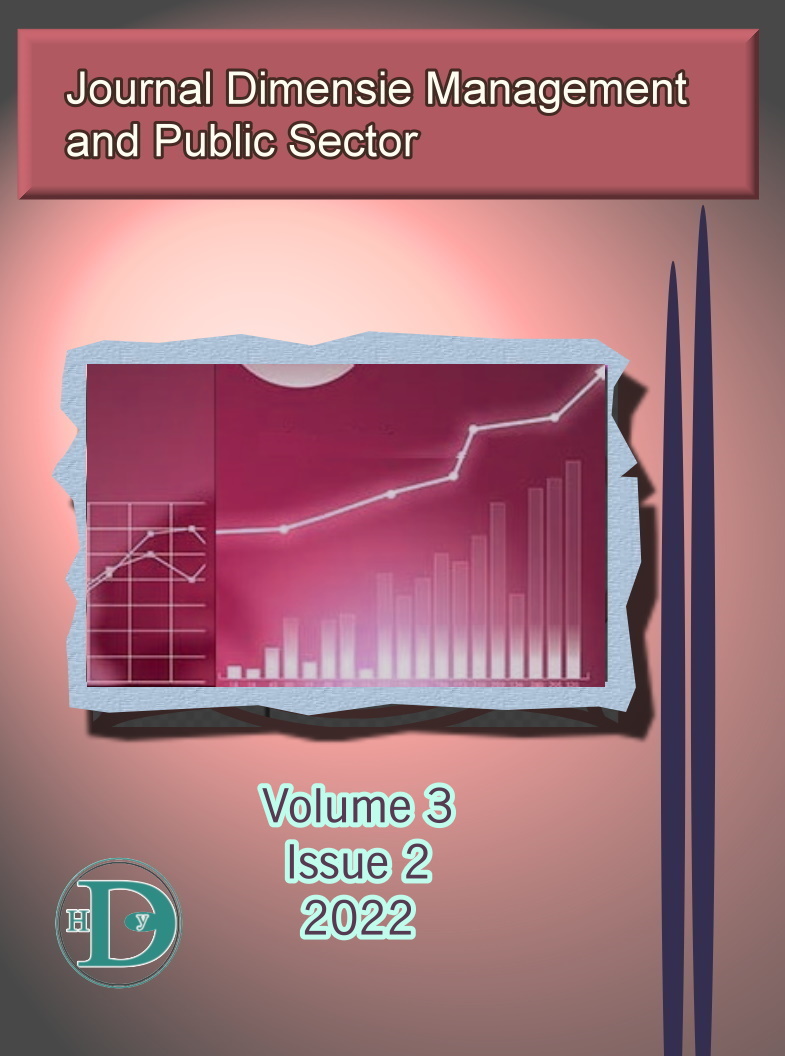Determination of Fraudulent Financial Statements in Indonesia
Main Article Content
Abstract
This study intends to examine the causations of fraudulent financial statement in Indonesia based on The Fraud Hexagon Theory. It uses secondary data from Indonesia’s companies that have history of doing fraudulent financial statement and delisting from Indonesia Stock Exchange, for the year 2010 until 2020. Data analysis was carried out with logistic regression method. The study views the company as a single party that commits fraudulent financial statements. Result shows pressure (ROA), arrogance (CEO dismissal) and collusion (whistle blowing system implementation) statistically have correlation with fraudulent financial statements. To the contrary, other fraud elements such opportunity (numbers of internal auditors), rationalization (total accrual), and capability (good governance implementation), statistically have no correlation with fraudulent financial statement. Simultaneously, all variables used in this study affect fraudulent financial statements.
Article Details

This work is licensed under a Creative Commons Attribution-ShareAlike 4.0 International License.
References
Aprilia. (2017). Analisis Pengaruh Fraud Pentagon Terhadap Kecurangan Laporan Keuangan Menggunakan Beneish Model Pada Perusahaan Yang Menerapkan Asean Corporate Governance Scorecard. Jurnal Aset (Akuntansi Riset), 9(1), 101–132.
Arens, A. A., Elder, R. J., & Elder, R. J. (2021). Auditing and Assurance Services: An Integrated Approach (D. Battista & S. wall, Eds.; 14th ed.). Pearson.
Felli, L., & Vallve, R. H. (2015). Collusion, Blackmail and Whistle-Blowing (No. 5343). https://ssrn.com/abstract=2607908
Ghozali, I. (2018). Logistic Regression. In Aplikasi Analisis Multivariate Dengan Program IBM SPSS 25 (9th ed., pp. 325–356). Badan Penerbit Universitas Diponegoro.
Godkin, L., & Allcorn, S. (2009). Institutional narcissism, arrogant organization disorder and interruptions in organizational learning. The Learning Organization, 16(1), 40–57.
Handayani, N., & Evana, E. (2022). Determination of Fraudulent Financial Report: Case of Banking Industry in Indonesia. Saudi Journal of Economics and Finance, 6(2), 51–56. https://saudijournals.com/journal-details/sjef/125/1147
Lestari, M. I., & Henny, D. (2019). Pengaruh Fraud Pentagon Terhadap Fraudulent Financial Statements Pada Perusahaan Perbankan Yang Terdaftar Di Bursa Efek Indonesia Tahun 2015-2017. Jurnal Akuntansi Trisakti, 6(1), 141–156.
Lindrianasari. (2011). PERGANTIAN CEO DUNIA. Suatu Bukti Pentingnya Informasi Akuntansi dalam Isu Pergantian CEO Dunia. (Nurdiono, Ed.). PENERBIT KANISIUS.
Ismail, F. (2018). Statistika Untuk Penelitian Pendidikan dan Ilmu-ilmu Sosial (M. Astuti, Ed.; 1st ed.). PRENADAMEDIA GROUP.
Murtanto, & Sandra, D. (2019). Pengaruh Fraud Diamond Dalam Mendeteksi Tingkat Accounting Irregularities. Jurnal Media Riset Akuntansi, Auditing & Informasi, 19(2), 209–226.
Nurbaiti, Z., & Hanafi, R. (2017). Analisis Pengaruh Fraud Diamond Dalam Mendeteksi Tingkat Accounting Irregularities. Jurnal Akuntansi Indonesia, 6(2), 167-184.
Ozcelik, H. (2020). An Analysis Of Fraudulent Financial Reporting Using The Fraud Diamond Theory Perspective: An Empirical Study On The Manufacturing Sector Companies Listed On The Borsa Istanbul (Vol. 102, pp. 131–153). Emerald Publishing Limited. https://doi.org/10.1108/S1569-375920200000102012.
Romney, M. B., & Steinbart, P. J. (2018). Accounting Information Systems (14th ed.). Pearson.
Rusmana, O., & Tanjung, H. (2019). Identifikasi Kecurangan Laporan Keuangan Dengan Fraud Pentagon Studi Empiris Bumn Terdaftar Di Bursa Efek Indonesia. Jurnal Ekonomi, Bisnis Dan Akuntansi (JEBA), 21(4).
Saputra, M. A. R., & Kusumaningrum, N. D. (2017). Analisis Faktor – Faktor Yang Mempengaruhi Fraudulent Financial Reporting Dengan Perspektif Fraud Pentagon Pada Perusahaan Perbankan Yang Terdaftar Di Bursa Efek Indonesia Tahun 2011-2015. Jurnal Akuntansi Dan Keuangan, 22(2), 121–134.
Septriani, Y., & Handayani, D. (2018). Mendeteksi Kecurangan Laporan Keuangan dengan Analisis Fraud Pentagon. Jurnal Akuntansi, Keuangan Dan Bisnis, 11(1), 11–23.
Skousen, C. J., Smith, K. R., & Wright, C. J. (2009). Detecting And Predicting Financial Statement Fraud: The Effectiveness Of The Fraud Triangle And Sas NO. 99. Corporate Governance and Firm Performance, 13, 53–81. https://doi.org/10.1108/S1569-3732(2009)0000013005.
Sunardi & Amin, N. M. (2018). Fraud detection of financial statement by using fraud diamond perspective. International Journal of Development and Sustainability, 7(3), 878–891.
Vousinas, G. L. (2019). Advancing theory of fraud: The S.C.O.R.E. Model. Journal of Financial Crime, 26(1), 372–381. https://doi.org/10.1108/JFC-12-2017-0128.
Zainudin, E. F., & Hashim, H. A. (2016). Detecting fraudulent financial reporting using financial ratio. Journal of Financial Reporting and Accounting, 14(2), 266–278. https://doi.org/10.1108/JFRA-05-2015-0053.
